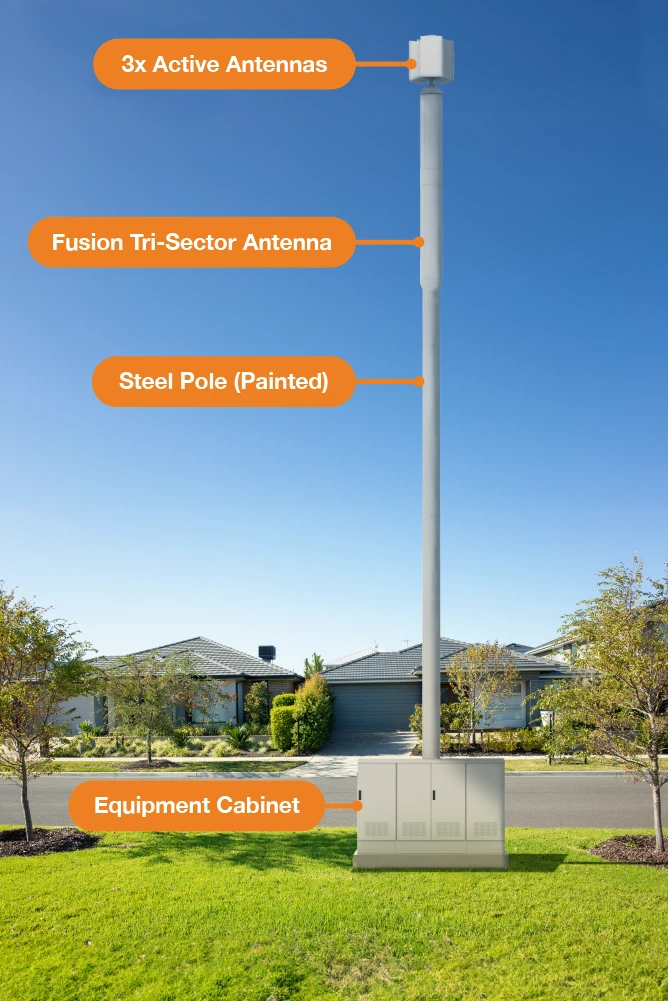
As 5G adoption continues to escalate, mobile network operators (MNOs) worldwide are expanding and densifying their networks. This often involves honing their deployment strategies to suit particular regions, geographies and use cases, as they evolve their network infrastructure.
In a large, diverse country like Australia, that means adapting to a wide range of different environments. And although there is no one-size-fits-all deployment approach for every network topography, there are some universal planning and design tactics that can be used to address various scenarios.
For example, as MNOs face growing limitations of traditional macrocell deployments, they are increasingly focused on sectorization in smaller cells. With a sectorized configuration, network resilience and efficiency can be significantly enhanced due to targeted frequency allocation and dynamic load balancing.
Think Small
A best practice to accomplish low-impact sectorization efficiently and effectively is by using a tri-sector solution, such as the versatile Alpha Wireless Tri-Sector Macro Streetworks, which encompasses a tri-sector antenna, steel pole and telecom enclosure. Because this type of solution is much smaller than traditional tower deployments, it is more suitable for areas where traditional macrocells typically may not receive zoning approval.
Following are five different use cases for 5G deployment in Australia, enabled by a mini-macro sectorization approach.
Use Case 1: Suburban scenario
This solution is well-suited to areas with low-rise suburban sprawl, including housing developments. In this environment, for instance, mini-macro cells could be deployed in supermarket car parks or on the edge of football fields located close to town.
In fact, mini-macro sectorization is ideal for filling in coverage dead zones in suburban areas. This solution is a particularly good fit when installing a new full-size macro tower doesn’t make sense in terms of visual impact and cost, yet small cells wouldn’t provide the needed coverage or sufficient fiber backhaul facilities are not available.
Moreover, since these mini-macro deployments are lower visual impact and lower cost per site than full macro towers, this solution delivers advantages in some new urban developments as well.
Use Case 2: Rural deployment
When providing coverage for a small town or rural community, such as a remote Indigenous community, return on investment (ROI) is a logical concern for most MNOs. If the site is only serving a few hundred people and wide-area coverage is not required, the cost and planning advantages of a mini-macro site enable faster ROI versus a big macro tower.
Due to the broad appeal of this solution for rural communities, a best practice would be for the MNO to propose the mini-macro deployment in conjunction with regional councils, especially if a government authority is offering subsidy funding.
Use Case 3: Peri-urban areas
The term “peri-urban area” refers to regions on the fringes of cities where coverage is challenging due to the terrain and lower population density. While these areas may be costly to cover in terms of ROI, they are frequently inhabited by people with the resources and motivation to expect better coverage that is more comparable to what their city neighbors experience.
As a result, building out full macro sites is not feasible in these areas, since it would be difficult to justify the cost, plus the visual impact of large towers may not be acceptable to local residents. A mini-macro solution, on the other hand, offers a better alternative to overcome these constraints in peri-urban locations.
Use Case 4: Black spots
The Australian government invests in telecommunications infrastructure to address identified coverage problems across the country, with support from state and local governments, national MNOs, and network equipment vendors. Thanks to this Mobile Black Spot Program (MBSP) initiative, every year several hundred sites are identified, and operators receive government funding to deploy in these areas.
MBSP sites that don’t require as much coverage as a full macro tower, or those sites to be deployed closer to population centers, are a good fit for a mini-macro site. Alternatively, the mini-macro solution may be preferred over small cells in smaller communities where coverage is a challenge, providing more coverage than a small cell while still having minimal visual impact.
Because a mini-macro solution is lower in cost and more easily deployable, this approach allows more sites to be built out using the same amount of funding, as opposed to macro sites. Ultimately, mini-macro sites may be a more attractive investment for both the government and the MNO in many MBSP locations.
Use Case 5: Tourism/Holidays
Many areas of Australia tend to see an influx of tourists on weekends, particularly around the coast and in “food tourism” hotspots, as people travel to visit wineries, beaches, foodie spots, and other popular destinations, staying in vacation homes and campgrounds. This leads to increased demand on the network in those areas, reducing capacity and impacting quality of service.
With lower coverage demand in the township or local area during the weekdays, deploying a full macro tower would be hard to justify. Likewise, a network of small cells may not have the coverage or backhaul infrastructure necessary to support a surge in demand. A mini-macro solution, however, provides sufficient coverage to relieve network congestion in busy times, while offering a more affordable alternative with a low visual impact.
To learn more about the best practices for efficient, effective 5G deployment in Australia, visit: https://alphawireless.com/macro-concealed-tri-sector-solutions/

The Tri-Sector Macro Streetworks solution can be deployed with or without active antenna units on top.
